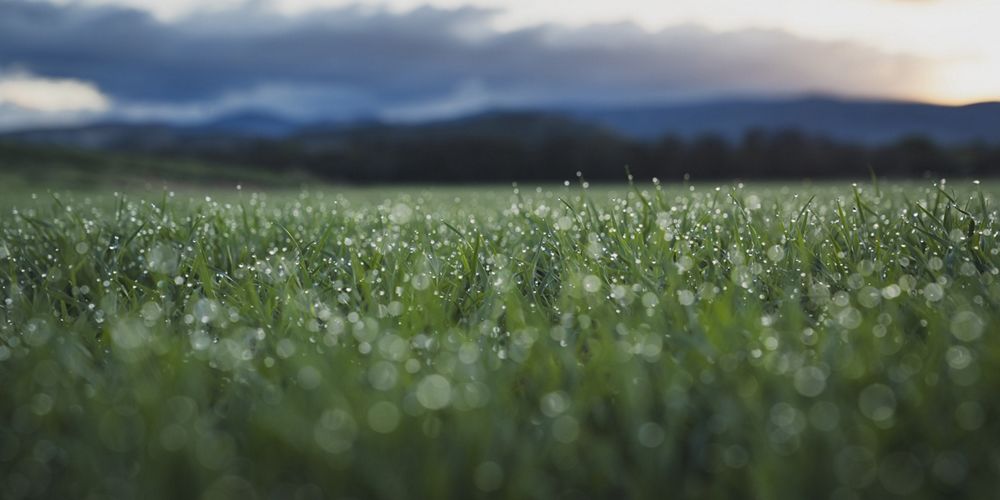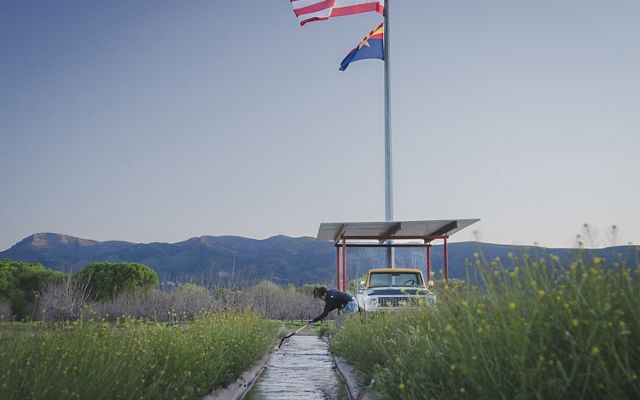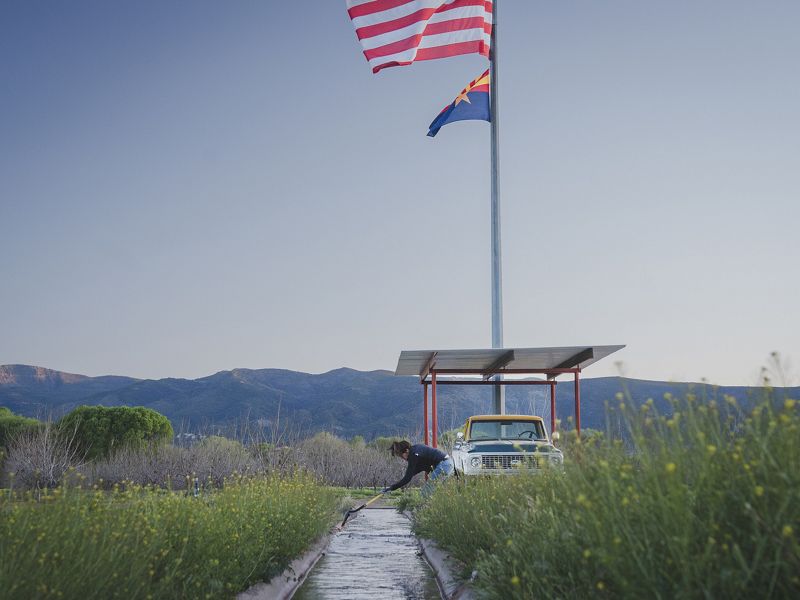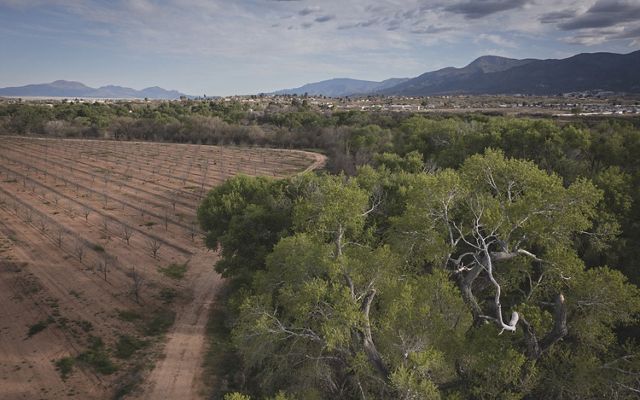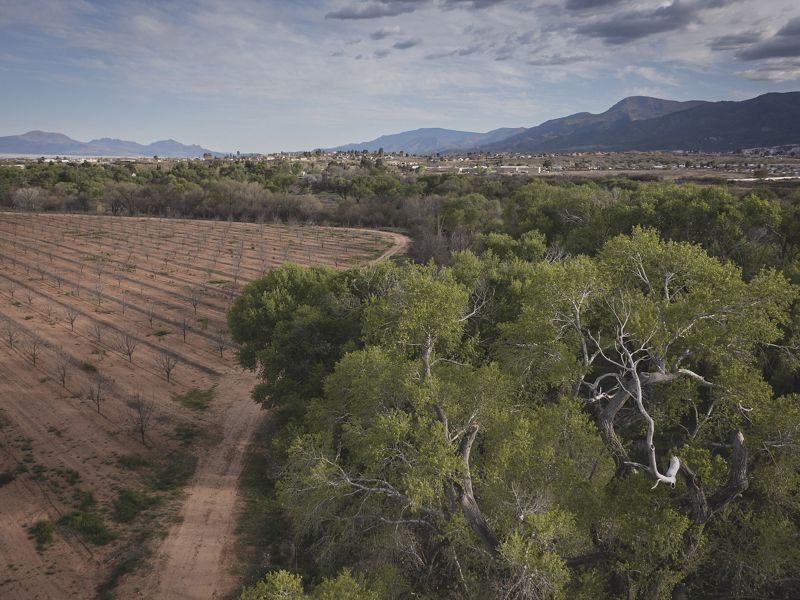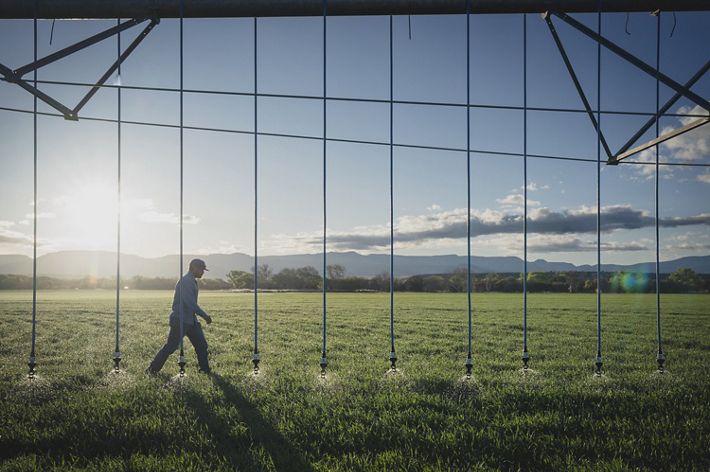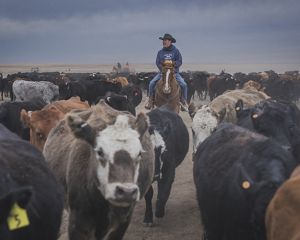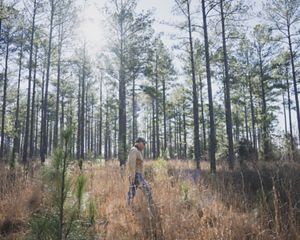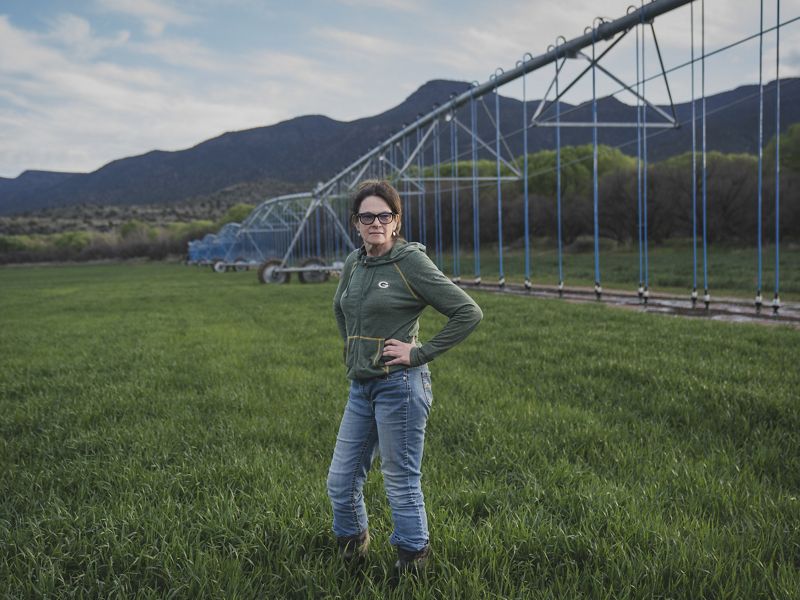
Claudia Hauser in field Portrait of Claudia Hauser in front of one of the center pivots the Farm Bill helped her install on her land to conserve water. "I'm extremely concerned about the water supply in this area. Mainly because of this continued growth that is happening in our valley and all over Arizona and the Southwest, we have to protect our water," says Hauser. © Morgan Heim
When Claudia Hauser drives her truck down the slopes of Copper Canyon into the town of Camp Verde, AZ, she can see everything that sustains her way of life—and everything that threatens it too.
“When I come down that hill, I take a deep breath and I'm like, I'm home,” the Camp Verde native says. She sees the huge American flag flying over her farm’s fields, the stand where she and her children sell their locally famous sweet corn and the hundreds of acres of land they’ve devoted to alfalfa, barley, pecans and other crops. Cutting through the patchwork of fields is a narrow, serpentine band of deep green. Beneath this wild tangle of cottonwood and sycamore run the waters of the Verde River, the waterway at the center of Hauser’s world.
If not for the river, her farm and town wouldn’t exist. She might not have met her husband, Kevin, a farm boy who once spotted her walking to school and offered her a ride. Nor would she later be blessed with four kids and 11 grandkids.
Quote: Claudia Hauser
“When I come down that hill, I take a deep breath and I'm like, I'm home."
The Verde, which means ‘green’ in Spanish, transforms an otherwise harsh landscape of creosote bushes and prickling catclaw into an oasis not only for people, but for wildlife and endangered fish. But this oasis is steadily getting carved up and paved over. “Sadly, a lot of the green is being replaced with rooftops,” says Hauser.
Development is at the forefront of Hauser’s mind these days. As with other rivers throughout the Colorado River Basin, a booming population and climbing temperatures are stretching the Verde thinner and thinner. Camp Verde, situated between the red-hot real estate markets of Phoenix and Sedona, saw roughly 1,000 people move to the town between 2019 and 2020, with an estimated 100 more coming every year since then, adding up to roughly 13,000 residents.
Hauser remembers when the town’s population was a quarter as large. She’s certain that her family’s farm—the area’s largest—would have been swept away in this tide of change if not for a fortuitous knock at their door in 2011. Her husband answered, and had a chat that changed the farm forever.
Back in the mid-2000s, the pace of development in Camp Verde was more a crawl than a gallop, but it was still an ever-present risk. Hauser’s husband and his dad had little say over the eventual fate of the farmland they’d been renting since the 1970s. Given Hauser & Hauser Farms’ extensive acreage and its prime riverside location, the landowners were contemplating subdividing it for housing. This would mean the loss of productive agricultural land as well as the forested corridor along the river, where the rocky, flood-prone banks had been left to grow wild.
One day in 2011, Kevin Hauser answered the front door to find two Nature Conservancy staff, Kimberly Schonek and Heather Reading, who’d come with a proposal. The Nature Conservancy wanted to work with the Hausers to repair or upgrade key parts of the irrigation infrastructure, thereby reducing the farm’s water use. As the area’s biggest agricultural operation, the farm had an outsize impact on the Verde’s flow. By modernizing the irrigation systems, TNC would help ensure there was enough water in the Verde to sustain its endangered fish and the two million downstream users.
The Hausers agreed, and soon construction began. But the farm’s new infrastructure couldn’t fend off the looming threat of a land sale. For that, another approach was needed. TNC turned to the Farm Bill, the federal government’s biggest investment in conservation on private lands. Farm Bill programs help farmers, ranchers and other landowners implement practices to conserve, restore and manage their land.
In 2016, in large part thanks to a $2.8-million grant from the Farm Bill’s Regional Conservation Partnership Program, TNC was able to purchase the development rights to the first of the Hausers’ three parcels of land. This decreased the land’s value enough that the family could then afford to buy it outright. In exchange, the parcel was put under a conservation easement, legally binding the Hausers to keep it farmland in perpetuity and to preserve the riverside forest.
“It's what we would consider a forever farm,” Hauser says. “So the way it looks now, it will look the same in 50 years, 200 years, 500 years.”
Quote: Claudia Hauser
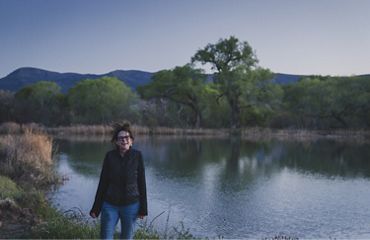
It's what we would consider a forever farm. So the way it looks now, it will look the same in 50 years, 200 years, 500 years.
In 2018, TNC again enlisted the Farm Bill to secure a conservation easement on the second parcel of Hauser farmland. The third and final piece of the land puzzle fell into place in 2022, when TNC sold the nearby Shield Ranch property to the Hausers, who’d been leasing it since 2014. If it wasn't for “TNC coming and approaching my husband, and talking about conservation easements,” Claudia says, “I know that these farms would have been developed. There's just no doubt in my mind.”
Farm Bill cost-share programs, paired with private funding, also financed a raft of projects to reduce the farm’s water use. The family converted 35 acres of alfalfa to pecan trees, which better tolerate drought, and installed micro-sprinklers to water each sapling. They swapped out flood irrigation for center pivots on some of their land, and buried drip tape on the corn fields, which all but eliminates water lost to evaporation. All of this, Hauser emphasizes, would have been financially impossible without the Farm Bill.
In parallel to Farm Bill-funded improvements, Schonek had brewed up another way to boost the Verde’s flows: beer barley. Barley uses one-fourth the water that alfalfa does, and it matures earlier, well ahead of the summer months when the river’s flow withers.
The Hausers were eager to experiment, but worried there would be no market for the grain. Beer barley needs to be malted before it’s brewed, and at the time, Arizona had not a single malting facility. Schonek approached a local entrepreneur to help finance and construct the state’s first commercial malthouse, Sinagua Malt.
From 2017 to 2019, the Hauser’s barley acreage grew from 14 to 120 acres. A local brewery, Arizona Wilderness Brewing, bought and bottled the vast majority of their crop. Though the pandemic threw a wrench in the works, the malting business has come back stronger than ever. Its supply is now bolstered by additional farmers, and demand is booming as more craft brewers see the benefit of flavorful, locally sourced—albeit slightly pricier—barley.
According to Schonek, now TNC’s water program director in Arizona, these water savings have boosted the Verde’s flows enough to put an end to what she humorously calls, “the Verde River walk-a-boat”—the period during hot, dry months when kayakers and rafters had to haul their boats to the next section of navigable river.
From Barley to Beer
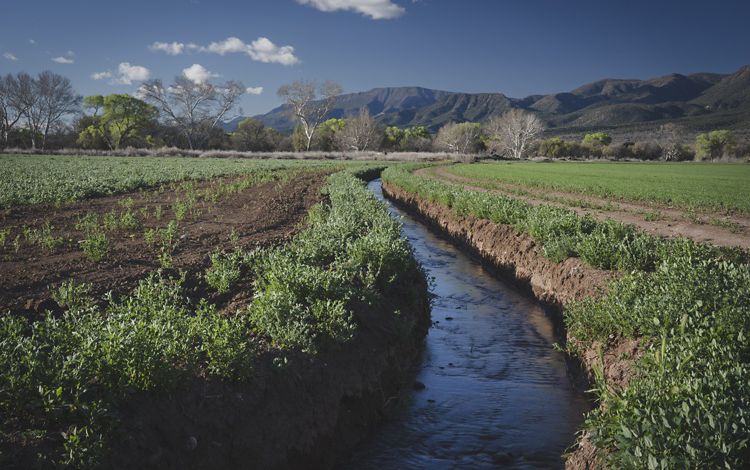
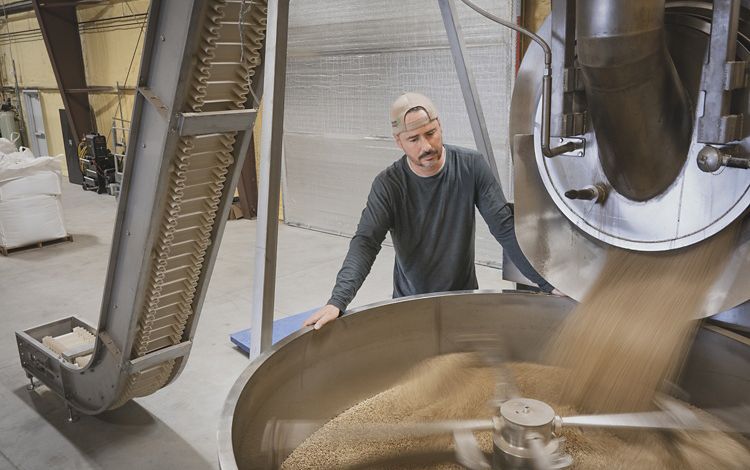
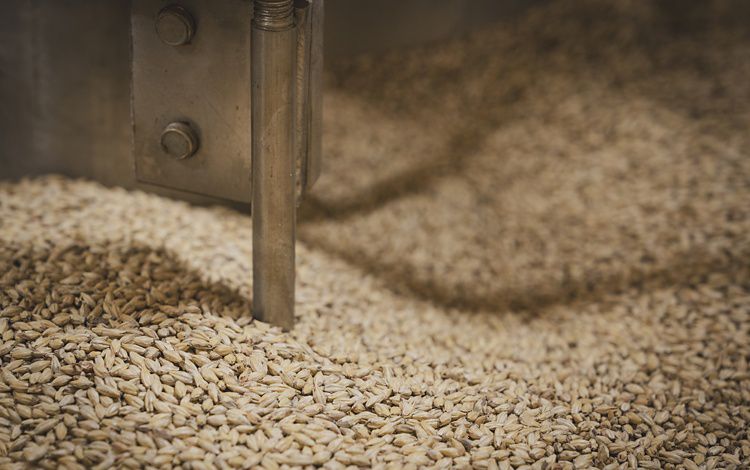
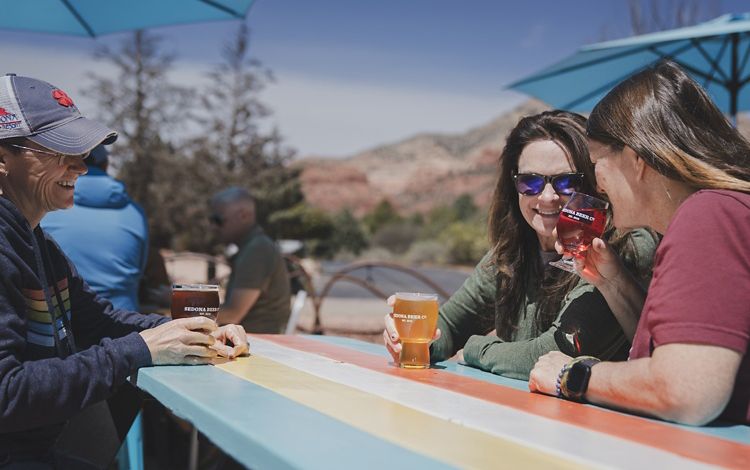
While the family farm moved from strength to strength, a devastating tragedy struck a blow to the family itself. In 2017, Kevin Hauser was diagnosed with colon cancer. He passed away in 2019, two days after Christmas, leaving his wife holding the reins of the farm after 32 years of marriage. Fortunately, in the depths of her grief, she didn’t have to go it alone.
“I am so blessed to have literally the best children,” she says. “I could not do this without my family, and I wouldn't want to do this without my family.” Her son Zach is now the main farmer, responsible for much of the day-to-day operations. His brother Ben, a year younger, gave up a career in law enforcement to return to the farm when his dad got sick. Hauser’s oldest, her stepson Chance, has taken over the agricultural equipment business that her husband started, while her youngest, Emily, helps out at the farm stand when she’s not busy being a mother.
“I have no doubt that Kevin is looking down and he is beaming with pride at how we have continued his legacy,” Hauser says.
Quote: Claudia Hauser
I have no doubt that Kevin is looking down and he is beaming with pride at how we have continued his legacy.
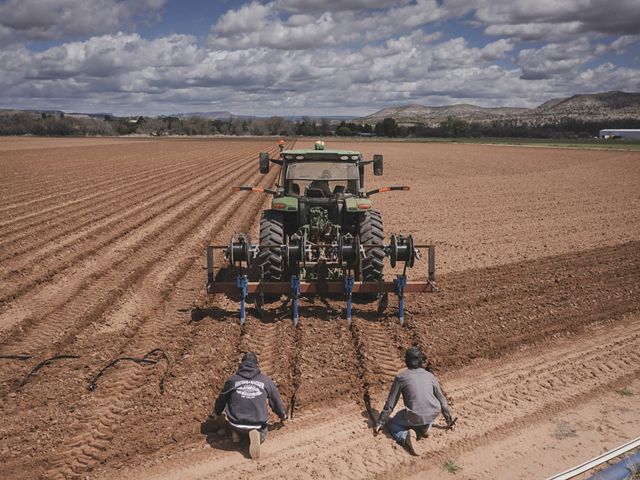
Why is the Farm Bill important?
The Farm Bill provides funding for voluntary, incentive-based programs that help farmers, ranchers and other landowners address climate change while conserving their land and way of life.
It's the single largest source of U.S. federal funding for conserving, restoring and managing private land, including grasslands, forests, ranchlands and croplands.
The Farm Bill provides $6 billion annually for conservation. From incentivizing climate-smart agricultural practices to opening doors for permanent conservation through agricultural conservation easements, this critical bipartisan legislation benefits every single state in the country.
With Hauser & Hauser Farms permanently protected thanks to easements, Hauser knows that the risk to her land doesn’t come from housing divisions, but from dwindling water supplies. In Arizona, outside of certain restricted areas, it’s legal for any landowner to drop a well and take as much groundwater as they choose. In the Verde Valley, the number of groundwater wells has grown from 250 in 1950 to more than 8,900 today. The proliferation of all these thirsty straws could not have come at a worse time, as the Southwest languishes under an epochal drought.
Water worries are why Hauser now sits on Camp Verde’s planning and zoning board. She remembers sitting down with the town codes to learn more about local water regulations. “I had my highlighter ready and I was like, I didn't get to highlight anything,” she says. The town had nothing on the books to protect water supplies, a problem that she hopes to fix.
Hauser’s advocacy has changed how she sees the river and its tributaries. For most of her life, these waterways have been, at best, a way to irrigate farm fields, and at worst a terrifying force of destruction. When she was in seventh grade, a local creek flooded and carried off her house, along with everything her family owned. Later, in high school, Hauser watched a woman get swept away and drown in that same creek’s floodwaters.
“I have a respect and fear of water growing up and having been traumatized by that,” Hauser says. But through her friendship with Schonek, her outlook began to shift. When Schonek took Hauser on her first-ever kayak trip down the river, Hauser was astonished at what she saw.
“It is the most gorgeous, pristine area full of wildlife,” she says. Sunbathing turtles skittered off logs as they approached. Herons lurked in the shallows, their sewing-scissors beaks poised to spear passing fish. After the wide open spaces of the farm’s fields and the surrounding desert, the trees wrapped them in a shady green embrace.
“I was just amazed by the beauty of this of this area,” Hauser recalls, “and how it absolutely needs to be protected.”
Soon after, she went out and bought a kayak of her own.
Speak Up for Nature
Support Farm Bill Conservation Programs
The Farm Bill offers a critical lifeline to farmers, ranchers and landowners who are interested in better conserving and managing their lands. Tell Congress: pass a Farm Bill that supports conservation.
